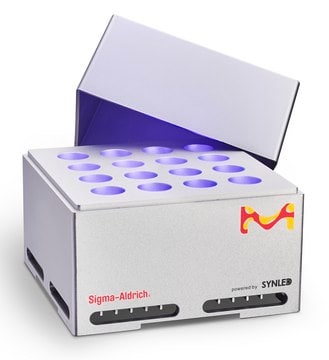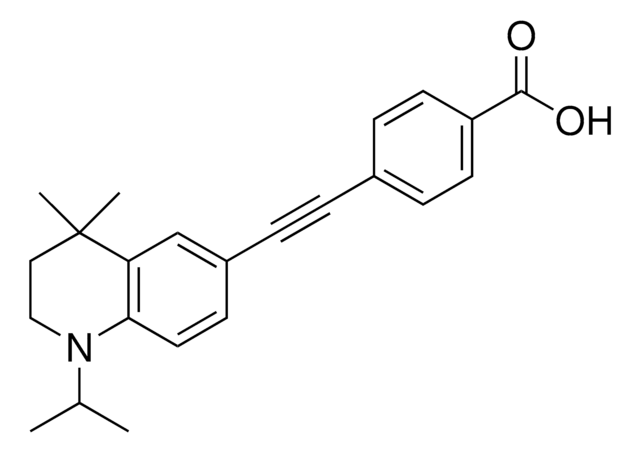Recommended Products
AC/DC input
(US and UK plug types included)
100 / 240 V AC, 50/60 Hz
diam. × H
21.0 cm × 18.5 cm
General description
an in-built UV sensor enabling the user to produce rapid, reproducible results. This instrument is suitable for high-throughput screening in multiwell plates, providing researchers with a tool to screen high numbers of compounds and reactions essential for drug discovery.
Features and Benefits
- The PhotoReact 365 is a bench top instrument for the acceleration of photochemical and photobiological reactions
- Instrument suitable for use with a standard size culture multi-well plate (85.5 mm x 128 mm) or single 95 mm round dish
- User selected light output from 0 mW/cm2 to maximum (approx. 13.0 mW/cm2)
- Variance less than 1mW/cm2 (at 100% power) and 0.5 mW/cm2 (at 50% power) across the well plate surface
- User control of total power output
- Light intensity and temperature monitors included that that records measurements every second during operation
- Data export as .csv files
- Device has locking lid that reduces user exposure to harmful light rays
Photocatalysis Technology Spotlight
User Manual
Choose from one of the most recent versions:
Certificates of Analysis (COA)
Sorry, we don't have COAs for this product available online at this time.
If you need assistance, please contact Customer Support.
Already Own This Product?
Find documentation for the products that you have recently purchased in the Document Library.
Articles
The application of radical chemistry towards organic synthesis is well-developed and wide-reaching, though often hampered by a dependence on toxic radical initiators.
The application of radical chemistry towards organic synthesis is well-developed and wide-reaching, though often hampered by a dependence on toxic radical initiators.
The application of radical chemistry towards organic synthesis is well-developed and wide-reaching, though often hampered by a dependence on toxic radical initiators.
Fluorescent retinoic acid analogues for use in cellular imaging, protein-ligand binding assays, and flow cytometry to bypass traditional problems associated with fluorescent probes.
Our team of scientists has experience in all areas of research including Life Science, Material Science, Chemical Synthesis, Chromatography, Analytical and many others.
Contact Technical Service







